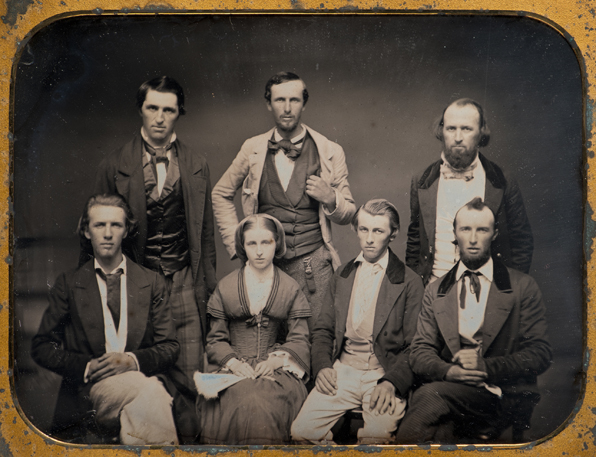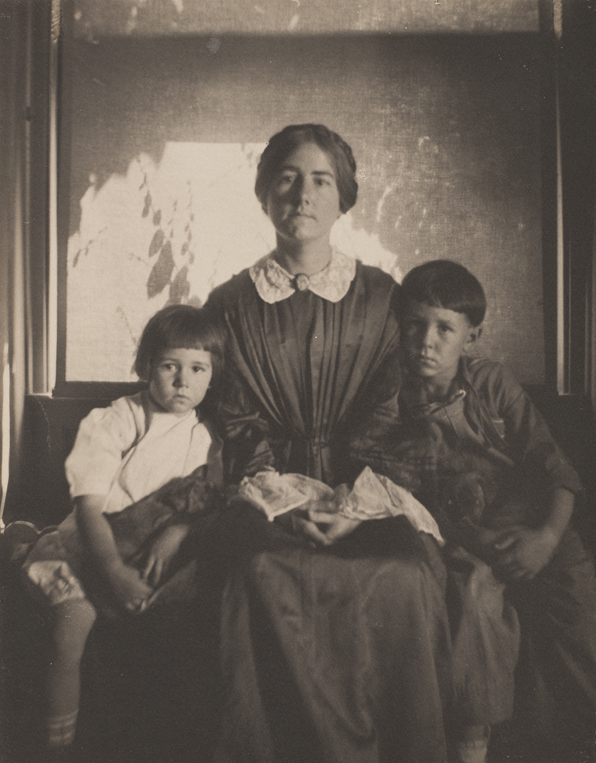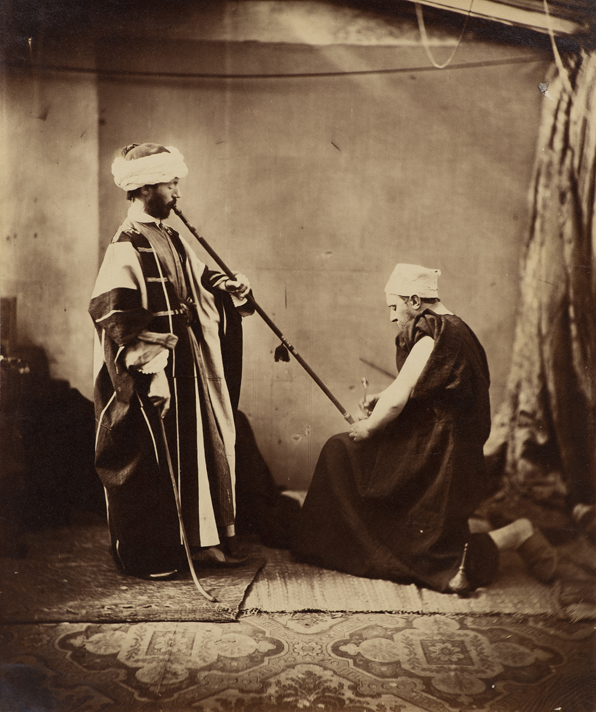
November 12, 2016–February 5, 2017
PEOPLE
While today it is commonplace to snap a family photograph, there was a time when it was considered a luxury to have one’s picture taken. Less expensive than a commissioned painting, daguerreotype studios were set up all over Europe and America in the 1850s to create portraits such as Family, Rochester, New York. This middle-class family would have likely dressed in their finest clothes for this portrait and had it taken for a special occasion. By 1900 family portraiture merged with artistic photography as practitioners like Gertrude Käsebier used family members to pose for works that were marketed as fine art. In Hermione Turner and Her Children, the photographer’s daughter and grandchildren are bathed in sunlight that filters through a curtained window behind them. While Käsebier made money photographing wealthy aristocrats, she earned her reputation as a creative photographer with images that bridged portrait and genre (scenes of everyday life).
Photographic portraits could also serve as “fiction.” For instance, Roger Fenton, having gained acclaim for his documentary images of the Crimean War, returned to London to begin a career as a professional photographer. Capitalizing on a fashion for paintings and prints of the people, customs, and costumes of Egypt, Asia, and the Middle East, Fenton created a series of posed and costumed men and women in his London studio. Orientalist Study is not a portrait of two men from the Middle East, but rather British models in a professional photography studio wearing costumes. The hunger for stereotypical characters fed the career of less well-known French photographers like Henri Béchard. He set up a practice in Cairo, Egypt, with the express purpose of creating images of local people and indigenous architecture to sell to tourists and French artists who sought to incorporate “authentic” elements of Middle Eastern life into their paintings. Béchard’s Water Carrier, Cairo depicts an Egyptian man posed carrying a waterskin.
Artist unknown, Family, Rochester, New York, 1850s. Clark Art Institute, 2012.3
Gertrude Käsebier (American, 1852–1934), Hermione Turner and Her Children, c. 1910. Clark Art Institute, 2010.8
Roger Fenton (English, 1819–1869), Orientalist Study, 1858. Clark Art Institute, 2001.6.2
Henri Béchard (French, active in Egypt, late 19th century), Water Carrier, Cairo, c. 1875. Clark Art Institute. 2011.5




-cairo.jpg)
-jpg.jpg)